 Starting from Scratch
Starting from Scratch
Since I came to my role as photography critic (and, eventually, historian, theorist, educator, and curator) with no directly pertinent background or credentials, it may seem odd that I heartily endorse a version of what Thomas E. Patterson calls “knowledge-based journalism” as the necessary path toward a substantial critical dialogue in photography, which I did in my last post. yet the fact that I achieved my version of “knowledge-based criticism” the hard way doesn’t require me to advocate that approach for all.
If I’d known as I began my post-secondary education in 1960 that I would spend my working life as a professional photography critic and historian, I might have sought a major and minor more pertinent than English literature and creative writing. But what?
When I launched this project of mine in 1968 you couldn’t get a degree in photo history, theory and criticism anywhere. You’d have had to fight to get an art history degree with a specialization in photography, or special permission in such a program for a dissertation on a photography-related topic. Visual sociology and visual anthropology barely existed as disciplines. Media studies and visual culture hadn’t been invented yet in academe.
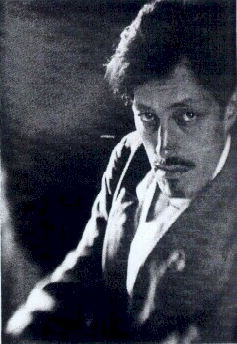
Sadakichi Hartmann by Charles Fournier (1917)
In any case, when I got my M.A. degree in 1967 (in English Literature and Creative Writing) I had no inkling of what I’d start doing less than two years later. So I’m an autodidact as a critic of photography, as were the few who preceded me in that practice, including Sadakichi Hartmann, by far the most dedicated and prolific of them. In the ’60s the same would have held, not incidentally, for anyone who wanted to write critically about jazz, dance, experimental film, popular music, and a number of other art forms whose study had not yet achieved academic certification.
As a result, many of my generation’s critics, and more than a few who came before them, were unschooled in the art forms and media they addressed. That didn’t disqualify them from doing their work ― James Agee, who pioneered film criticism in the 1940s, did so simply as an attentive moviegoer with no involvement in filmmaking, for example. Nor did it stop them from acquiring the knowledge necessary to create authoritative and even definitive commentaries; Agee’s reviews remain central to the literature of film and a model of clear critical writing directed toward a broad general audience. (I’ve cited his influence on me in that regard.)
No Experience Necessary
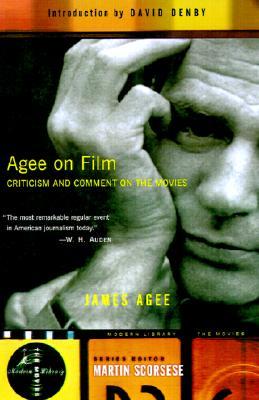
“Agee on Film,” cover
But the fact that he hadn’t studied film in a formal educational program (there were no cinema studies programs anywhere in the ’40s, nor any post-secondary filmmaking programs) doesn’t mean Agee was uninformed about the medium. He’d read the literature on film that existed at the time ― the writings of Eisenstein, Pudovkin, and others, plus the various movie critics of the day.
He’d read screenplays, grasping the form so insightfully that he himself would write several classics, including The Night of the Hunter and The African Queen, the latter nominated for an Oscar. As a writer of fiction he’d read widely and deeply, understood narrative form and storytelling, knew the issues of voice and point of view from a maker’s perspective. And he’d studied films by looking at them, long, close, and hard. Consequently, even though he wrote about film for a small-circulation New York left-wing periodical, The Nation, he found a substantial readership among major directors, cinematographers, screenwriters, and other film-industry professionals in Hollywood and elsewhere
Not someone voicing uninformed opinions, in other words, though like many of his contemporaries and those who came after him in various media, myself among them, he’d cobbled together his education as a critic from the available sources, scant and scattered as they were. That this method works, and has produced some notable results, doesn’t make it the best way, certainly not the only way, to achieve what Patterson calls “knowledge competency,” which, as he notes, “is harder to acquire outside the university than within it.”
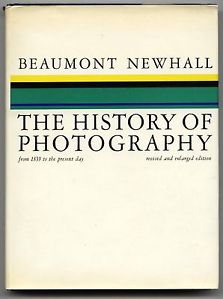 The germinal historians of photography, Beaumont Newhall and Helmut Gernsheim, didn’t have much in the way of specific grounding either. Newhall’s abandoned doctoral thesis in art history and museum studies at Harvard (he never got his degree) addressed paintings of sailing ships. Gernsheim studied art history at the Ludwig Maximilian University of Munich, and subsequently completed a two-year studio program at the State School of Photography, Munich.
The germinal historians of photography, Beaumont Newhall and Helmut Gernsheim, didn’t have much in the way of specific grounding either. Newhall’s abandoned doctoral thesis in art history and museum studies at Harvard (he never got his degree) addressed paintings of sailing ships. Gernsheim studied art history at the Ludwig Maximilian University of Munich, and subsequently completed a two-year studio program at the State School of Photography, Munich.
These stood them in good stead by exposing them to the rigors and obligations of scholarly research; and, in Gernsheim’s case, the studio program gave him a professional-level understanding of then-current techniques. But what they knew (and transmitted to the world) as the medium’s history they learned on their own, not in school.
How to Build a Critic
Certainly I learned a lot from their books, along with those of Robert Taft, Heinrich Schwarz, and the handful of others whose published titles filled the still-small shelf comprising the literature of photography in English circa 1967. I pulled together and gradually rationalized what I gleaned from those works, plus a set of understandings from Ray Birdwhistell’s Kinesics, Edward Hall’s proxemics (The Silent Language, The Hidden Dimension), Erving Goffman’s microstudies of social behavior (especially Relations in Public), R. L. Gregory’s Eye and Brain, Noam Chomsky’s structural linguistics, the researches into frame-by-frame analysis of Paul Byers, William Ivins’s Prints and Visual Communication, Marshall McLuhan’s Understanding Media, and other sources.
Undeniably an idiosyncratic and surely, by some lights, bizarre set of reference points. I only made matters worse in the 1980s by engaging (for my own developmental purposes, not for professional reasons) with doctoral-level studies in “media ecology” at New York University with Neil Postman, which added Harold Innis, Alfred Korzybski, Julian Jaynes, Postman himself, and assorted others to the mix.
![]() Similarly, I acquired my journalistic skills, such as they are, by doing: first working on and eventually editing the newspaper of my undergraduate alma mater, and later writing regularly for such papers as the Village Voice, New York Times, and New York Observer, and occasionally for the Washingon Post, Newsday, and other reputable periodicals whose standards I had to meet. Making deadlines, writing to fit a given space, styling my work to interest a general audience, interviewing, fact-checking, attribution of sources ― I learned all that on the job.
Similarly, I acquired my journalistic skills, such as they are, by doing: first working on and eventually editing the newspaper of my undergraduate alma mater, and later writing regularly for such papers as the Village Voice, New York Times, and New York Observer, and occasionally for the Washingon Post, Newsday, and other reputable periodicals whose standards I had to meet. Making deadlines, writing to fit a given space, styling my work to interest a general audience, interviewing, fact-checking, attribution of sources ― I learned all that on the job.
Training vs. Education
No editor with whom I’ve ever worked asked me for a CV or resumé as a prelude to considering a proposed article. Nor has any editor inquired as to where I went to school, what I studied there, or my class standing at graduation. My work spoke for itself, and stood or fell on its own merits. Which is only to say that while I acquired writing and research skills, and some grasp of critical thinking, in the course of my formal education, it didn’t directly prepare me or qualify me to work as a “cultural journalist” (a neologism not coined at the time) or a critic of the arts. I did that on my own, as have many of my colleagues.
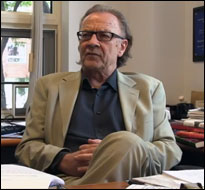
Thomas E. Patterson, screenshot, 2013
And I would hate to see that option vanish, as tends to happen when any craft or art becomes academicized. Because the risk inherent in what Patterson calls “systematic knowledge” lies precisely in the fact that the transmission of systematized information and ideas does not necessarily foster thinking outside the box, a central component of true critical activity. As Albert Boime pointed out, “Control instruction and you will control style” served as the central principle for academic art from its very inception. And, as Omar Willey adds, “The corollary should be obvious: control style and you will also control discourse.”
In the present academic atmosphere, with postmodern dogma still pervasive, pomo references still mandatory, and pomo locutions still expected, that same rule still holds, not only in studio art programs but in programs concerned primarily with art/photo history and art/photo theory. The homogenized quality of the academic discourse makes the jargonized, agonized writing that results (most of it, by my standards, unreadable) all sound the same. Few editors at publications aimed at a broad general audience find it publishable ― a blessing, surely.
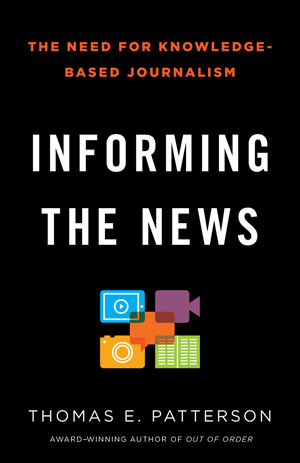 Indeed, one can see that tendency manifested in the way that Patterson, with whose arguments I mostly agree, conflates the concepts of education and training, terms he uses as if synonymous and interchangeable. Hardly. Practically antithetical to each other, in fact. Training devotes itself to programming a subject with behavior patterns; its goal is automatic, efficient repetition of those patterns. Except in the most careless, indiscriminate sense, that’s not what we mean when we talk about education.
Indeed, one can see that tendency manifested in the way that Patterson, with whose arguments I mostly agree, conflates the concepts of education and training, terms he uses as if synonymous and interchangeable. Hardly. Practically antithetical to each other, in fact. Training devotes itself to programming a subject with behavior patterns; its goal is automatic, efficient repetition of those patterns. Except in the most careless, indiscriminate sense, that’s not what we mean when we talk about education.
You can train an athlete, a sharpshooter, an airplane mechanic, a neurosurgeon, a computer programmer, and perhaps a hard-news journalist. But unless you have as your goal someone who will replicate a certain set of actions to achieve a predetermined result, you can’t (or shouldn’t) train a philosopher, a psychoanalyst, an artist, or a critic. Educate them, by all means. Guide them in exploring a variety of problem-solving strategies and the fundamentals of critical thinking. Inculcate some basic precepts, guidelines, rules of thumb. But let them follow their own noses, and instincts, in choosing their areas of specialization and finding the courses and readings and other experiences that will nourish those interests.
•
This post supported by a donation from the Estate of Lyle Bongé.






Leave a Comment